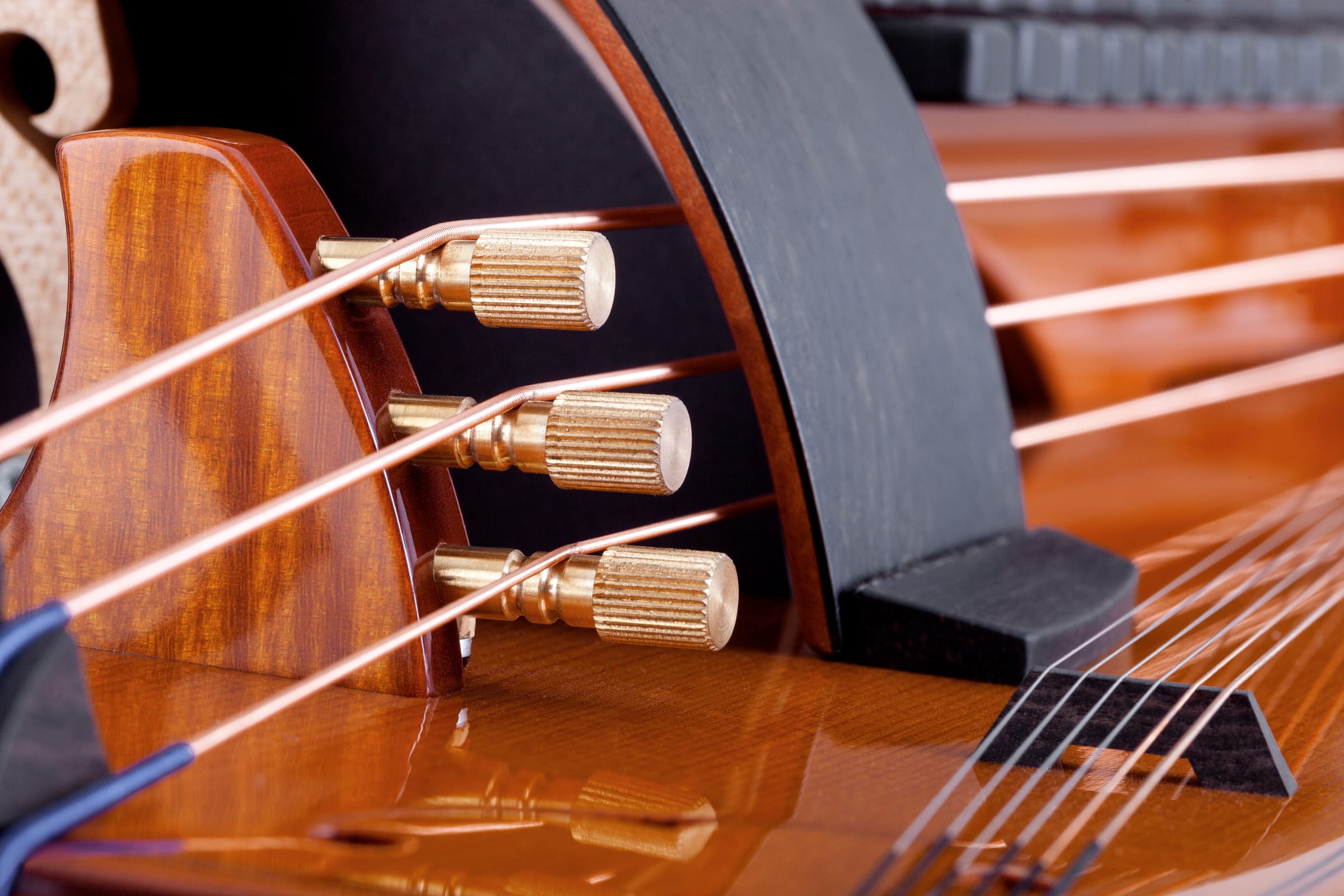Hurdy gurdy strings could be of four types: melody strings, drone strings, trompette strings and sympathetic strings, are you hurdy gurdy beginner and want to know all of them? keep reading because… YES hurdy-gurdy is a string instrument
Melody Strings for hurdy
Melody strings, chantarelles or chanters are the main strings on the instrument, which are played with the keyboard. They are usually made of steel or gut and come in various gauges, with the thicker strings producing a lower pitch and the thinner strings producing a higher pitch.
Here’s my quick chart for melody strings in modern setting:
Low G (G3) -> Viola G string
High G (G4) -> Viola A string
Low C or D (C3/D3) -> Viola C string
High C or D (C4/D4) -> Viola D String
Don’t buy steel core strings, they sound horrendous with the exception of perlon core like helicore. Our “Go to” brands of viola strings for hurdy gurdy are:
Thomastik Vision / Vision Solo
Corelli Crystal
Thomastik Dominant
for historical or more traditional approach you can use:
High G -> Gut 0’94
High D -> Gut 0’70 or Yonex BG65
Although this depends a lot on the string length that you need, you can use a string calculator like this one to see gauges VS tension
Drone Hurdy-Gurdy Strings
Drone strings are usually located on the outer side of the hurdy gurdy and produce a constant low tone. They are usually thicker than the melody strings and are also wound
In modern settings you want to use cello strings, if you doubt get Dominant
Low G drone -> C cello string 1/8 (kids cello)
Low C or D drone -> G cello string 1/8 (kids cello)
in more traditional setings you can use copper wound strings with gut core such as savarez BFC, lately I use this strings of Viola da Gamba BFC 360 for C and BFC 640 for G
Trompette Strings
Trompette strings are the ones closer to your body, they produce a buzzing or percussion-like sound when played, the concept of this comes from the medieval instrument “tromba marina“. They are usually thin and are made of gut or synthetic materials.
in this case, use Gut, Fluorocarbon or Nylgut. brands to go are, Aquila, Kürschnner or even some fluorocarbon harp or guitar strings, nylon is too soft for my taste, I wouldn’t recommend, but there are some makers using them that prooved me that they work, so feel free to try them and decide.
C (or D) trompette -> 0.84mm to 1mm gut
G (or A) trompette -> 1.05mm to 1.20mm gut

Sympathetic Strings
Sympathetic strings are strings that resonate by themselves, it’s basically like having built in reverb, If you are lucky to have sympathetic strings in your instrument, make sure they are perfectly in tune, because if they are out they can make your instrument sound really bad!
we normally use acoustic guitar strings, mandolin, viola d’amore, sitar strings, baglama or even kanun bronze strings, here you have to be creative and try 😉
Hurdy Gurdy Strings for sale
where should we buy them? in this case Hurdy Gurdy Amazon works! they have a wide variety of strings, you can also try thomann, or your local violin shops, for gut strings I’d definitely check aquila web or specialized early music shops like cuerdaspulsadas!
This are basically the best hurdy gurdy strings, It’s important to maintain the proper tension on each string to produce the correct pitch and tone, the strings are expensive, but do you know… how much does a hurdy gurdy cost?
Replacing strings is also an important part of maintaining a hurdy gurdy. Over time, strings can become worn or break, which can affect the sound quality of the instrument. When replacing strings, it’s important to pick the appropriate gauge and material, make sure to check the list above!
Overall, understanding the different types of hurdy gurdy strings and how to properly maintain them is essential for any player looking to produce the best possible sound from their instrument.
keep on cranking
Sergio González

Comments are closed